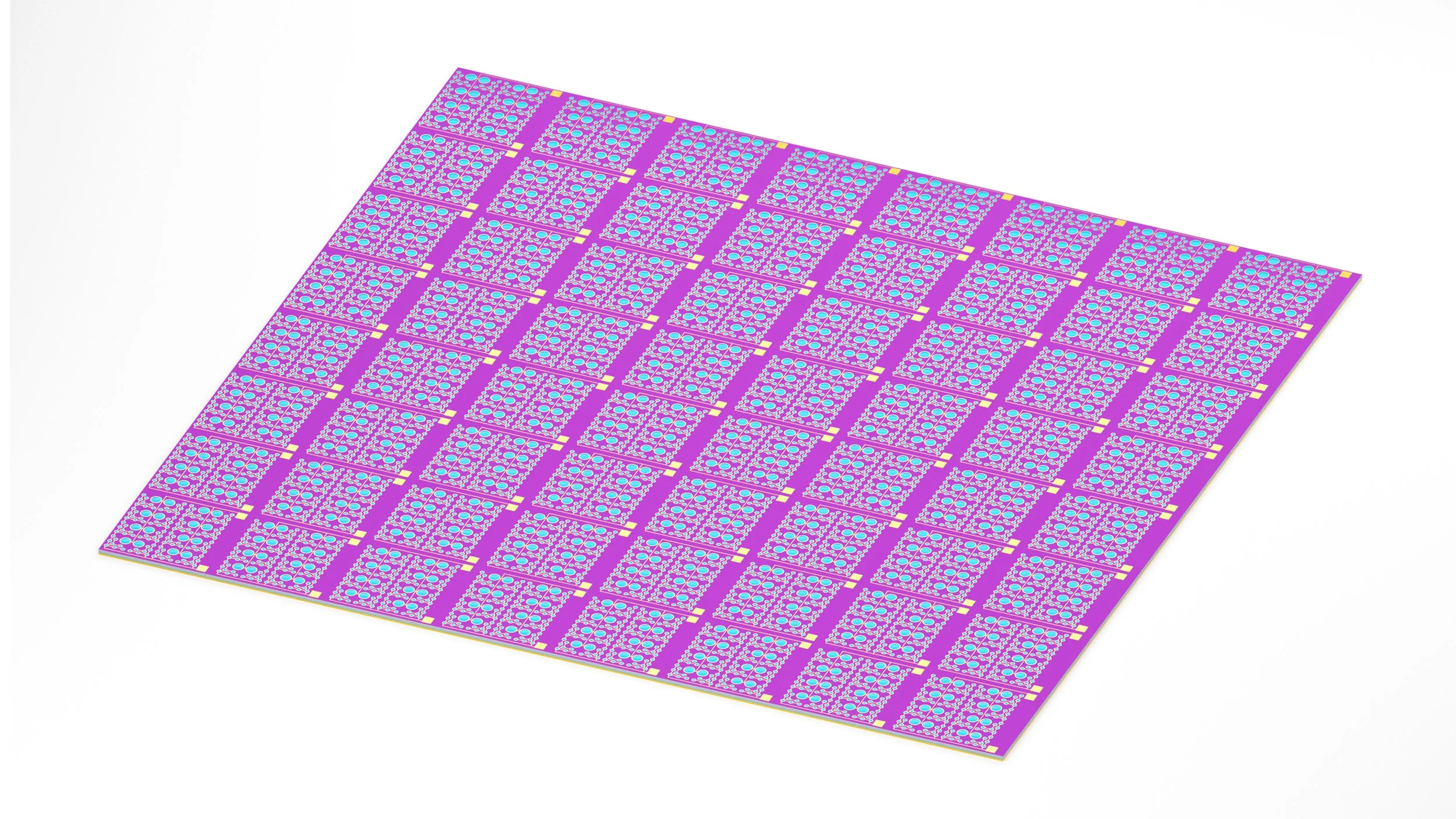Ace Photonics: VCSEL Fabrication Built for the Next Wave of Photonics
At Ace Photonics, VCSEL fabrication isn’t a single step—it’s a tightly controlled sequence from wafer to packaged device. We combine GaAs-based epitaxy, fine-line lithography, repeatable oxide aperture formation, and rigorous reliability screening to deliver consistent optical power, fast modulation, and long field life. Whether you need single emitters or high-density arrays, we build to your specification and scale with you from NPI to volume.
Why Ace Photonics for VCSEL Fabrication
Process depth: MOCVD/MBE epitaxy, DBR mirror engineering, ion implantation, selective oxidation, and metallization under one roof.
Design-to-fab support: Co-design on aperture size, cavity length, beam divergence, and thermal paths to match your driver and system constraints.
Quality you can ship: ISO 9001–aligned workflows, SPC on critical steps, and wafer-level burn-in options before singulation.
Short feedback loops: Rapid mask spins and DOE frameworks to lock yield and uniformity early.
Customized VCSEL Solutions
No two sensing stacks or links are the same. We tailor:
Wavelengths: 760–980 nm (common: 795/895 nm for sensing)
Aperture & cavity: 3–12 μm apertures, oxide or implant confinement
Arrays: 1D/2D arrays up to thousands of emitters, addressable or parallel drive
Speeds: 10–50+ Gbps per lane for short-reach links, fast pulsed modes for ToF/structured light
Packages: TO-can, chip-on-board, LGA/SMT, optics-integrated modules; optional driver co-packaging
Understanding VCSEL Fabrication: Our Process
1) Epitaxy (Foundation)
We grow multilayer stacks—active region, DBR mirrors, and confinement layers—on GaAs substrates. Uniform epitaxy is the bedrock for threshold current, slope efficiency, and wavelength stability.
2) Photolithography (Pattern Definition)
Sub-micron lithography sets mesa geometry, contact windows, and array pitch. Tight CD control keeps resistance low and optical modes stable across the wafer.
3) Etching (Device Sculpting)
Dry/wet etch forms mesas and exposes layers for oxidation and contacts. Balanced profiles protect mirror integrity and enable repeatable aperture placement.
4) Oxide Aperture / Ion Implant (Current Confinement)
Selective oxidation or implantation defines the current path and optical aperture—core to mode control, differential resistance, and reliability under heat.
5) Metallization (Contacts & Interconnect)
Low-resistance ohmic contacts and redistribution layers provide uniform drive and robust ESD performance, with options for Au-free stacks for certain packages.
6) Passivation & Wafer-Level Testing
Dielectric passivation protects mirrors and edges. We run LIV sweeps, spectrum, far-field, and thermal roll-over at wafer level to bin before singulation.
7) Dicing, Packaging & Final Test
After singulation, dies are mounted and wire-bonded or flip-chipped. We finish with environmental and reliability screens to match your market.
Advanced Techniques at Ace Photonics
DBR engineering: Mirror pair optimization for target wavelength and temperature drift.
Uniformity controls: In-situ epi monitors + post-epi mapping to minimize wafer bow and wavelength spread.
Thermal pathways: Metallization and submount choices that flatten R_th and extend lifetime at power.
Array co-optimization: Optical crosstalk control, beam shaping, and microlens alignment strategies.
What You Gain with Ace Photonics VCSELs
Superior performance – High wall-plug efficiency, low threshold current, stable wavelength under load.
Reliability & longevity – Designed for HTOL, temperature cycle, humidity, and ESD robustness.
Cost efficiency – Wafer-level binning and high yield on common wavelengths reduce total system cost.
Applications We Serve
Telecommunications & Datacom: Short-reach links, active optical cables, co-packaged optics.
Data Centers: 850-nm links with tight skew, fast turn-on, and narrow spectral width.
Consumer Electronics: 3D sensing, proximity detection, eye-safe depth mapping at 940 nm.
Automotive: LiDAR/ToF illumination and DMS/OMS modules with extended temperature range.
Industrial & Medical: Positioning, flow sensing, and instrumentation requiring stable beam profiles.
Case Studies
High-Speed Datacom Refresh
A global networking customer needed a faster lane rate without thermal penalties. We co-designed the oxide aperture and mirror stack, then qualified a package with lower R_th. Result: higher slope efficiency and stable eye diagrams at the target data rate, with improved wafer-level yield and tighter wavelength bins.
Precision Medical Sensing
A medical OEM required narrow divergence and consistent pulse energy. We delivered a custom array with controlled aperture diameters and wafer-level power binning. The final module achieved repeatable illumination across units and simplified downstream calibration.
The Road Ahead: Trends in VCSEL Fabrication
PIC integration & co-packaging — Tighter coupling to drivers and optics to shrink footprint and losses.
Advanced arrays — Higher emitter counts with addressability for structured light and scanning.
Sustainability — Process water recycling, solvent recovery, and energy-efficient tools to lower fab footprint.
Frequently Asked Questions
What makes VCSELs reliable for automotive?
Controlled oxide apertures, rugged metallization, and screening (HTOL, temp cycling, humidity) keep performance stable across temperature and vibration.
How do you control wavelength drift?
Through DBR design, epi uniformity, and thermal path engineering; we also bin at operating temperature to keep modules consistent.
Can you support custom arrays?
Yes—pitch, emitter count, and grouping are configurable. We also align microlenses or diffractive optics when needed.
Do you provide wafer-level data?
We supply LIV, spectrum, and far-field maps for traceability and smarter binning before packaging.



